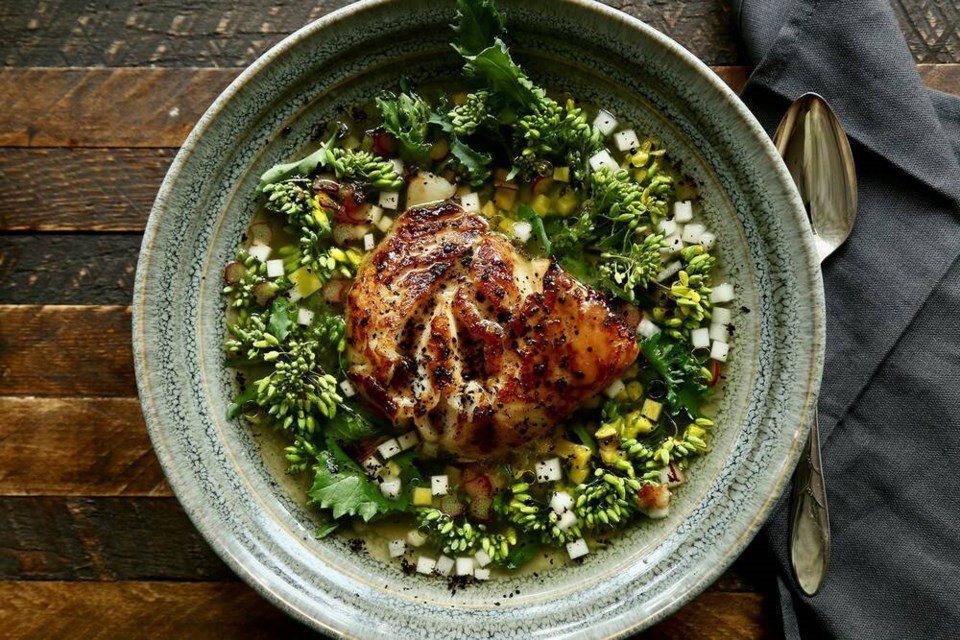Studying permaculture and natural systems has changed and informed my life for the better. I see all things as they relate to nature’s logic, informed by an elegant master plan that exists far beyond my own needs. I get it now. It isn’t fairy woo-woo – it is a super intelligence that blows my mind.
Take for example, kale shoots, a.k.a. kale rabe, kale rapini or more accurately “napini.” When we have had our fill of over-wintered brassicas like kale, brussels sprouts, collards, mustards, sprouting broccoli, etc., and the stalks are thick and stumpy from repeated harvests under cover of cold frames and fleeced hoops, the plants start to bolt, or go to seed.
This is also the time when our native bees hatch and require sustenance to fuel their very short but highly productive lives. Thankfully, we grow enough brassicas to share with native and non-native bees, so I can harvest some nutrient-dense shoots for the kitchen and still leave plenty for pollinators, as nature intended.
We no longer cut and compost bolting vegetables, instead we cut stalks and set them aside in tubs and buckets for the bees, and ultimately for seeds. What once looked to me like piles of bent and spent stalks in need of a tidy, now looks like the makings of so many beautiful still lifes staged throughout the garden.
Small birds and pollinators of all shapes and sizes enjoy the colourful banquet in shades of green, yellow, white and purple – feasting on the same life-giving phytonutrients that sustain my family. I am rewarded by a constant hum of gratitude and birdsong as I see to the business of disassembling the cold frames, topping-up raised beds with living soil, and transplanting hardened-off seedlings.
These meditative rituals have, over time, developed new layers of meaning that turn work into pleasure and add value to my community and to the planet.
Providing natural habitat and forage for birds and pollinators is more critical than ever, as established gardens and native green spaces are cleared in their entirety to make the building of new homes and commercial buildings easier and more cost-effective. I see it in our neighborhood even now, when we should all know better, care more, and expect even to be educated and held accountable by all levels of government.
My heart hurts when we lose more habitat than we need to borrow for our own use, so the least I can do is share it and be mindful and grateful for what nature has designed for shared consumption by organisms at all four levels of the (trophic) food chain.
Humans are the only species that takes more than we need, that is perpetually insatiable. Crazy, right? It takes real effort to not be. It takes understanding.
I believe that the “earth care, people care, fair share” ethos and principles of permaculture are key to a new understanding that could enrich people with the will and confidence to make small but heroic choices that defer to nature’s logic, and do so happily. I know that it can happen because it did happen to me.
It takes deliberate and mindful work to bend the sometimes messy rural-centric principles of permaculture around and into our urban environments, while maintaining the aesthetic that attracts us to design-controlled neighborhoods, but it can be done.
We can start small, with a beautiful bee bouquet of tender kale and purple sprouting broccoli shoots for a friend, or by including delicious, nut-buttery napini on the menu of your elegant spring-themed progressive dinner party table.
We can start then, with a conversation.
Laura Marie Neubert is a West Vancouver-based urban permaculture designer. Follow her on Instagram @upfrontandbeautiful, learn more about permaculture by visiting her website or email your questions to her here.
For a taste of permaculture, click on the YouTube link below:


